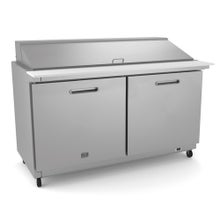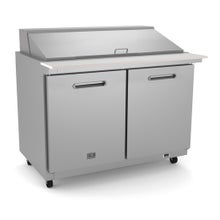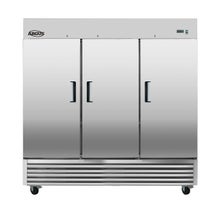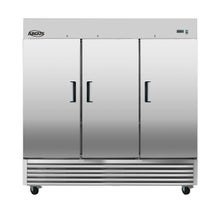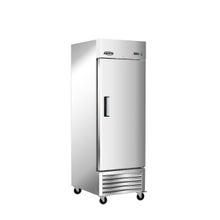Kitchen Equipment Buying Guide for Authentic Asian Restaurants
By: Matthew Berry • June 2, 2023 • 20 minute read time
Kitchen Equipment Buying Guide for Authentic Asian Restaurants
One of the key elements to opening a new Asian restaurant is to develop your menu first. Your menu can guide your equipment purchasing process and many other aspects of opening a new restaurant.
Go through each menu item and determine what cooking equipment, prep equipment, and serving supplies they'll require.
As you start your equipment-buying journey, keep these tips in mind to help you save money and find quality equipment:
- Create a budget for your equipment and supplies, and don't overspend.
- Find trustworthy suppliers that offer reasonable prices on high-quality equipment and supplies.
- Shop multiple suppliers and look for the best prices.
- Consider future cost savings by choosing energy-efficient equipment.
- Research the products you're interested in buying. Look at online reviews and ask other restaurant professionals for their opinions on equipment.
- Leasing or otherwise financing equipment can help you get all the necessary equipment and supplies without outlaying all the money upfront.
- Protect your critical and expensive equipment with extended warranties.
Buying commercial cooking equipment for Asian restaurants
Every Asian restaurant is different. Let your menu guide your equipment purchasing decisions; that way, you don't buy equipment you'll rarely or never use. The frequency you'll use each piece of cooking equipment is different — a sushi bar may not need a charbroiler or griddle, but all restaurants use the same basic equipment.
- Deep Fryers - From Japanese tempura to Korean fried chicken to samosa and crab Rangoon, deep fryers are important features for more Asian restaurants, especially for appetizers. Most restaurants can use a tube-style fryer or open-pot deep fryer. Open-pot fryers are easier to clean, while tube-style fryers retain and regain heat better than other fryers. A flat-bottom fryer is the style you need if your restaurant fries lots of tempura battered food, dough, or other wet battered food. Consider investing in a pressure fryer if your restaurant specializes in crispy fried chicken. These specialized fryers cook the chicken under pressure, raising the temperature of the oil and cooking food faster. The faster cook time means less oil will be absorbed into the food, creating a less greasy, crispier final product than a tube or open pot fryer would make.
- Commercial ranges - Ranges come in all shapes and sizes, from a single burner stock pot range to a six-burner stove top with a 24-inch griddle and two ovens. The stovetop is often the heart of a commercial kitchen. When buying a range, determine the power source, electric, natural gas, or liquid propane, then decide the number of burners you need and whether you want built-in features like a griddle, charbroiler, or oven. If your Asian restaurant's menu calls for many items to be cooked in a wok, investing in a wok range could be a good decision, and keep valuable burner space on your standard range open for other uses.
- Griddles - Flat-top grills, another common name for griddles, are versatile cooking equipment. Flat tops can cook vegetables and meat and heat pots and pans. Many griddles have multiple heating zones, allowing the cook to prepare several dishes simultaneously. Teppanyaki griddles are often used at what is commonly called hibachi restaurants (a hibachi is a different type of cooking equipment that is more similar to a grill or charbroiler). Teppanyaki are flat metal cooking surfaces that drop into counters or have counters built around them. They allow guests to watch as their food is prepared.
- Commercial rice cookers - Rice is a staple food worldwide and is heavily featured in Asian cuisine. Investing in one or more commercial rice cookers will make sure you have plenty of consistently cooked rice throughout the day. Dedicated rice warmers keep rice at food-safe temperatures and ready to serve.
- Steamers - Commercial steamers can cook large batches of steamed food.
- Steam tables - If your restaurant has a buffet at lunch or all the time, steam tables will keep your food at safe temperatures. You'll also need metal food pans or hotel pans. For food that's served cold, use a salad bar.
In many locations, you'll need to keep most of your cooking equipment under an exhaust vent or hood to meet local health and fire safety codes.
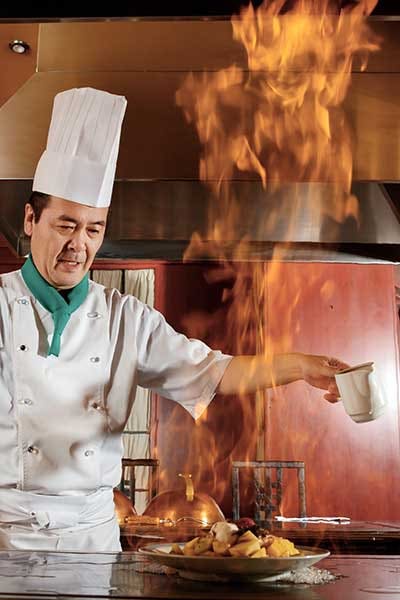

What refrigeration equipment do Asian restaurants need?
As you make your commercial restaurant equipment list, consider how you want to keep your ingredients and prepared food cold. Commercial restaurant refrigeration comes in many varieties. As you decide what to purchase, think about what food you'll serve, how it will be made, how your kitchen will be laid out, and how much room you have.
- Prep tables - Refrigerated prep tables are great for kitchens that need to keep a variety of cold ingredients at hand to make customizable food like banh mi, sushi, rice bowls, and pad thai. Sandwich and mega-top prep tables feature cutting boards that are usually 10 inches deep, while pizza prep tables usually have 19-inch cutting boards. The number of pans listed for prep tables refers to the number of 1/6-size pans that can fit in the refrigerated well. Sandwich and pizza prep tables hold two rows of 1/6-size pans, while mega-top prep tables hold three rows. All prep tables have doors or drawers with refrigerated or freezer space for extra ingredients. Standard-sized poly food pans and metal food pans are used in the refrigerated well.
- Reach-in refrigeration - Reach-in refrigerators and freezers give you a large cooling capacity to store raw and prepped ingredients in food storage containers, commonly called Cambros. Some key features to look for when shopping for a reach-in refrigerator or freezer are whether it is a top-mount or bottom-mount compressor, the number of doors and whether the doors are solid or glass.
- Walk-in refrigeration - Most restaurants couldn't operate without a walk-in cooler or freezer. Walk-ins allow you to keep large quantities of raw ingredients and prepped food ready to cook and serve. Depending on your space, walk-in refrigerators and freezers can be installed inside or outside your restaurant.
- Worktop and undercounter refrigeration - If space is a concern in your commercial kitchen, undercounter refrigerators and freezer can slide under worktables and countertops to give you extra cooling space. Worktop freezers and refrigerators feature a work surface on top and sometimes a backsplash. Another space-saving type of equipment is a refrigerated chef base. The reinforced tops of these refrigerators allow you to put other equipment like griddles, mixers, and charbroilers on top of them. Worktop and undercounter fridges and chef bases are also called lowboys due to their short height.
- Sushi cases - As your sushi chef prepares your maki and uramaki rolls or nigiri, sashimi, and temaki, you need a place to store them. Sushi cases provide a temperature-controlled environment to keep the sushi at safe temperatures, and the glass case also provides an elegant display for your chef's creations.
- Merchandisers - Sushi cases aren't the only merchandisers Asian restaurants should consider. Glass door reach-in merchandisers are helpful in front-of-house areas where drinks and other prepared food needs to be kept cold. Having a separate merchandiser for these purposes frees up space in the back of house refrigerators. If you have a high volume of refrigerated items your waitstaff constantly needs to have replenished, consider a pass-thru refrigerator that allows a back-of-house team member to load from the kitchen side. At the same time, a separate door faces the front-of-house side for waitstaff to access.
- Ice makers - Every restaurant needs ice to serve drinks or pack around food on a buffet. Modular ice machines allow you to choose the size and type of ice you make with a specific-sized ice bin. If your Asian restaurant has a bar, investing in a separate undercounter ice machine for the bar area would be helpful. If you plan to have ice bins separate from your ice maker, you'll need ice buckets or ice caddies to move ice to the bins. You'll also need ice scoops to fill glasses and ice totes.
- Soft-serve ice cream machine - Most buffets serving Americanized Chinese food and other types of Asian cuisine have soft-serve ice cream machines. Consider offering the popular treat at your buffet.
Buying Food Prep Equipment for Asian Restaurants
Making food in a commercial kitchen takes more than cooking equipment and refrigerators. You need food prep equipment and supplies like cookware, including sauce pots, stock pots, fry pans, mixing bowls, steamer baskets, and woks. Mesh strainers, China caps, and colanders to rinse rice and produce are also important in any kitchen. Colanders can sometimes be used as steaming baskets.
You'll need cutting boards and knives when breaking down chicken, pork, and vegetables to cook. Most chefs and cooks use different knives for different purposes. You'll need boning knives, fillet knives, butcher knives, and cleavers to break down large pieces of protein and remove bones. Most chefs prefer to use a chef knife or santoku knife as their primary blade. Paring and utility knives are used for smaller applications like cutting fruit or peeling vegetables. Scissors or shears can also be helpful in the kitchen.
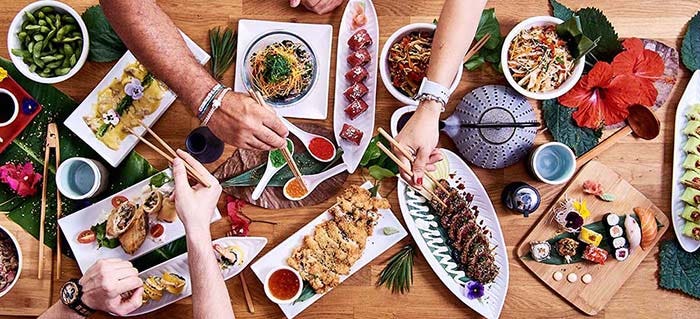

Food processors, blenders, and mixers are popular food prep equipment but might not be needed in all kitchens.
Thermometers and timers are other common pieces of commercial kitchen equipment that are easy to overlook but are needed in every restaurant. Other easily overlooked kitchen equipment includes utensils like spoons, spatulas, spoonulas, turners, tongs, stirring paddles, wok shovels, cooling paddles, and bamboo sushi rollers.
Once you've prepped ingredients or made soups and sauces, you'll need to store them in food storage containers; you can put them in your reach-in refrigerator, walk-in cooler, prep table, or other commercial refrigeration.
What serving and dining supplies do Asian restaurants need?
The type of serving and dining room supplies you need depends, like with everything you buy, on what food you serve.
If you have takeout or delivery options for your customers, or if you want your guests to be able to take home leftovers, you'll need takeout containers. Popular types of takeout containers include black plastic containers with clear lids, hinged foam clamshell containers, and folded takeout boxes. You'll also need portion cups for sauces.
For your dine-in customers, you'll need the following:
- Dinnerware - Plates, platters, and bowls come in different shapes, sizes, and colors. Choose colors and patterns that compliment your restaurant's interior colors and decor. When selecting sizes for your dinnerware, consider your serving sizes and how they will look on the plate.
- Beverageware - The type of drinkware you purchase depends on the kind of restaurant you run. Do your decor and atmosphere require actual glassware? Or can you use plastic tumblers? If you serve alcohol, you'll want to purchase specific glasses for your cocktails, beer, or liquor. You'll also need pitchers to refill customers' water glasses.
- Flatware - The cutlery your customers use may seem simple, but you'll need to balance factors like design, weight, and cost to find the right forks, spoons, dinner knives, and steak knives. Asian-style soup spoons are popular for dishes like ramen, pho, and wonton soup.
- Serving trays - Waitstaff often need trays to take orders to customers. Some restaurants that serve sushi will serve large orders on wood or melamine sushi boats or other sushi serving trays.
Buying Storage and Maintenance options for Asian restaurants
As you set up your Asian restaurant's new commercial kitchen, you need to think about how you will store refrigerated and dry ingredients. You'll also need to consider how to set up workstations for kitchen staff, front-of-house staff, and your dishwasher. Your storage and maintenance will depend on the size of your business -- both physically and the volume of business you do. Some standard equipment you should consider includes the following:
- Shelving - Shelving may seem simple, but there are a few variations to be aware of. Wire shelving kits are versatile, allowing you to choose the distance between shelves. Most shelving kits come in three categories: polymer, chrome-plated, and epoxy-coated. Polymer shelves are built with heavy-duty plastic and are designed to hold hundreds of pounds. Epoxy-coated shelves resist rust and are perfect for humid areas like walk-in coolers. Chrome-plated shelving kits will rust in humid environments and are better suited for dry storage areas. Other shelving includes wall shelves which are great to hang in work areas to keep frequently used dry ingredients or pots, pans, and lids. Cookware racks also help you save space and stay organized by giving you a place to hang fry pans, woks, and sauce pots.
- Can racks - Keep your canned goods organized with can racks. When you grab one off the rack, the next will roll right into place.
- Equipment stands - Purchasing countertop griddles and charbroilers is often less expensive than buying models with open or cabinet bases. An equipment stand can bring your countertop items to an easily workable height.
- Work tables - Your staff needs a place to prep and plate food. Stainless steel work tables give your employees a large, sturdy, easy-to-clean work surface. Work tables come in a range of sizes and can have backsplashes to prevent ingredients and tools from falling between the table and the wall. Kitchen work tables can have an undershelf, an open base, or an enclosed base.
- Sinks - Your restaurant kitchen needs multiple sinks. You'll need at least a single basin hand sink for your employees to wash their hands and a three-compartment sink to wash pots, pans, plates, etc. A spray nozzle can be helpful to rinse dirty dishes before sending them into a dishwasher.
- Dishwasher - A commercial dishwasher can save time and keep clean plates, glasses, silverware, pots, and pans ready for your waitstaff and kitchen staff. Dishwashing racks will help you organize and protect items as they go into the dishwasher. Bus boxes and bus carts will help you clear tables and transport dishes to and from the dishwashing pit.
- Floor mats - For the safety of your customers and staff, having floor mats in your entrances and your kitchen is a great investment. Entrance mats allow your guests and staff to wipe their feet when they walk in, keeping the rest of your floors cleaner and dryer. Anti-fatigue floor mats are great for areas where employees stand for long stretches of time.
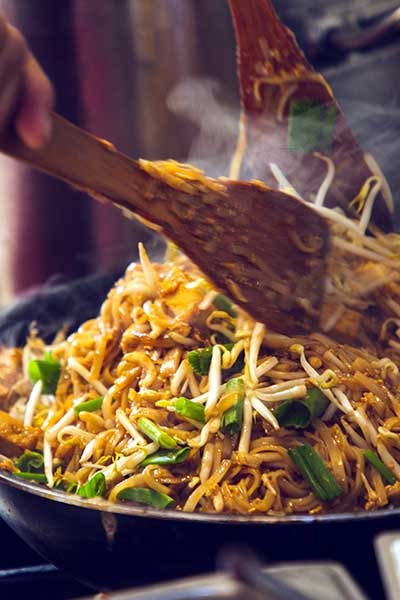

What Furniture should Asian restaurants shop for?
If you offer dine-in service at your new Asian restaurant, you'll need furniture to set up your dining room to accommodate customers.
- Restaurant tables - Restaurant tables consist of a table base and a tabletop. In many cases, they are shipped unassembled to save on shipping costs and decrease the chances of damage. When shopping, looking for table kits that allow you to purchase bases and tops individually is helpful. If a tabletop or table base needs to be replaced, you won't have to purchase an entirely new table, saving money. Determine whether you want dining-height or bar-height tables. Taller bar-height tables require bar stools or for customers to stand.
- Restaurant chairs - The wrong chair can ruin a customer's otherwise stellar experience at your restaurant. Make sure your chairs are comfortable, sturdy, easy to move, and match the rest of your decor.
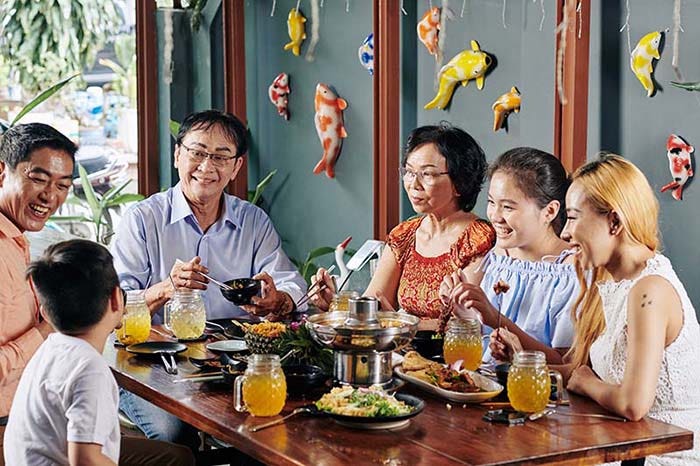

- Bar stools - If you're using bar-height tables or have seating at a bar, you'll need bar stools. Some bar stools are made to match chairs, giving your restaurant dining room a consistent look. If you use a different bar stool, make sure they complement the rest of your dining room furniture and decor to give your business a professional look.
- Booths - Restaurant booths provide customers with a sense of privacy in an otherwise busy space. When purchasing a booth, make sure you're buying properly sized tables to go with them.
- Patio tables and chairs - If your Asian restaurant has room for outdoor seating, take advantage of it with patio furniture. Make sure the outdoor restaurant furniture you buy is comfortable, easy to clean, and complimentary to your decor. You'll also want to balance between furniture that's heavy enough not to be blown away by the wind but also not extremely difficult for your customers and employees to move.
Whether you're serving traditional Chinese, Filipino, Indian, Korean, Japanese, Thai, or Vietnamese food, having the right equipment and supplies from a trusted equipment dealer will make starting your new Asian restaurant easier.
Share


